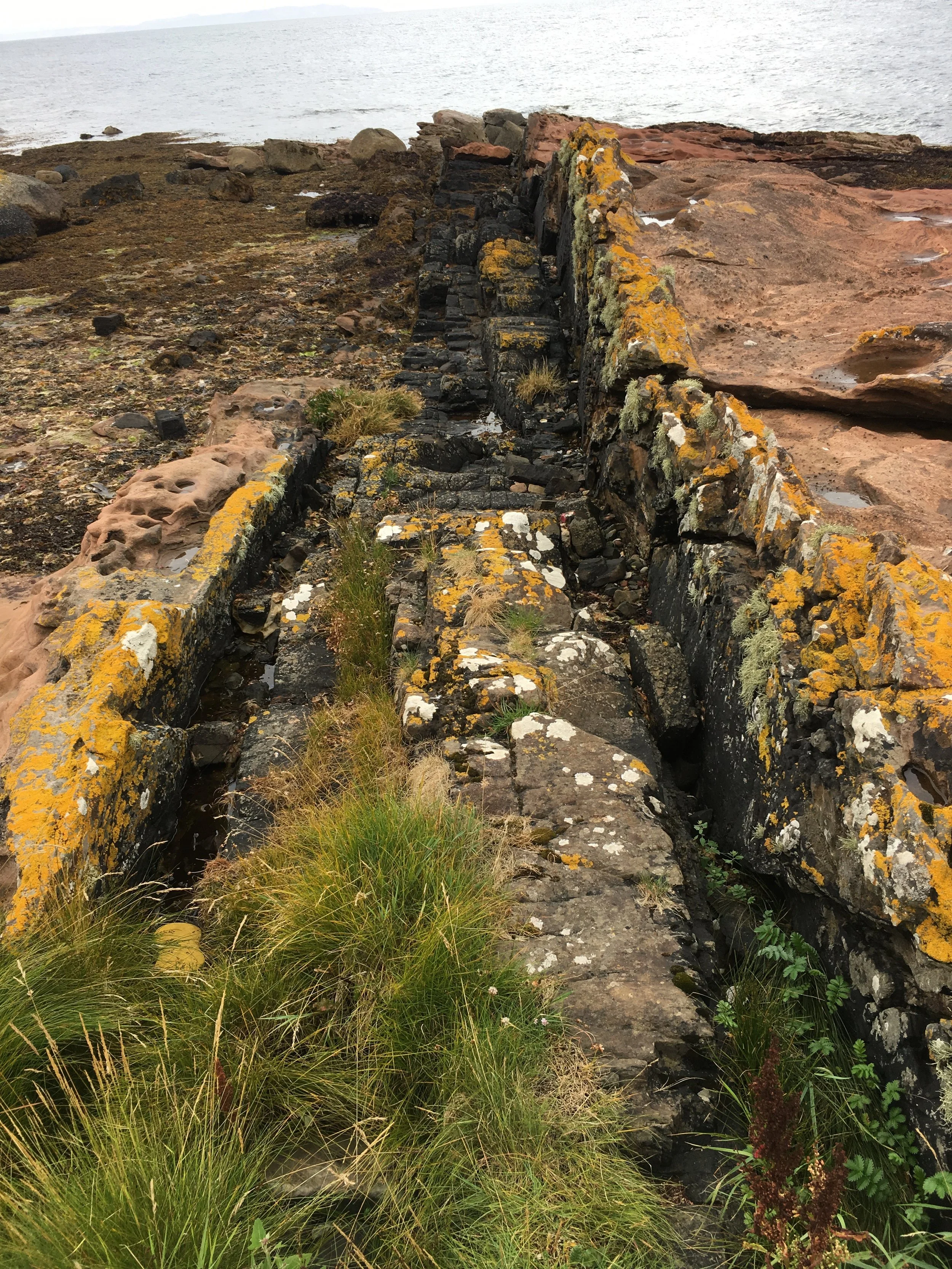Deformation bands, Arran, Scotland
Just off the main road that circulates the Isle of Arran on the NE of the island are Permian sandstones at a place called Corrie shore. These are reddish in colour suggesting a process called oxidation where iron has changed from one state to another - known in everyday terms as rusting. These are actually high porosity sandstones deposited by wind when the UK was just south of the equator during the Permian period. However, there are dense networks of a special type of fracture known as a deformation band which chops up the sandstone outcrops into compartments. These features are white coloured on fresh surfaces and if we were to look at them down a microscope we’d see crushed grains which serve to reduce the porosity and permeability and hence overall quality of these rocks.
Network of deformation bands in Permian sandstones on Corrie shore, Arran
In turn, the bands are more resistant than the host sandstones - in fact intersecting bands have created bumps which stick out due to relative resistance to erosion.
When the deformation bands come together they create raised bumps that are resistant to erosion
Some compartments are filled with nodular cements - possibly barite. It is interesting that along individual bands these thicken towards the band in some areas but in other areas the band is barren of cements. Nevertheless, the cemented compartments create raised bumps.
Nodular cements (possibly barite) related to deformation bands - note how the cement thickens up close to individual deformation bands in some areas but in others the band is barren of cements.
I couldn’t see much evidence of relative motion on the deformation band sets, although the one below shows a left lateral component in one area.
Left-lateral component of displacement between 2 deformation band sets.
Along the coastline are some igneous dykes made possibly of dolerite that have intruded into the sandstone during the Tertiary.
Dolerite ? dyke intrusion. Baked margin along the yellow moss line.
Underhill, J.R & Woodcock, N,H (1987). Faulting mechanisms in high-porosity sandstones; New Red Sandstone, Arran, Scotland. From, Jones, M.E, Preston, R.M.F (eds), Deformation of Sediments and Sedimentary Rocks, Geological Society Special Publication, No. 29, p 91 - 105.





